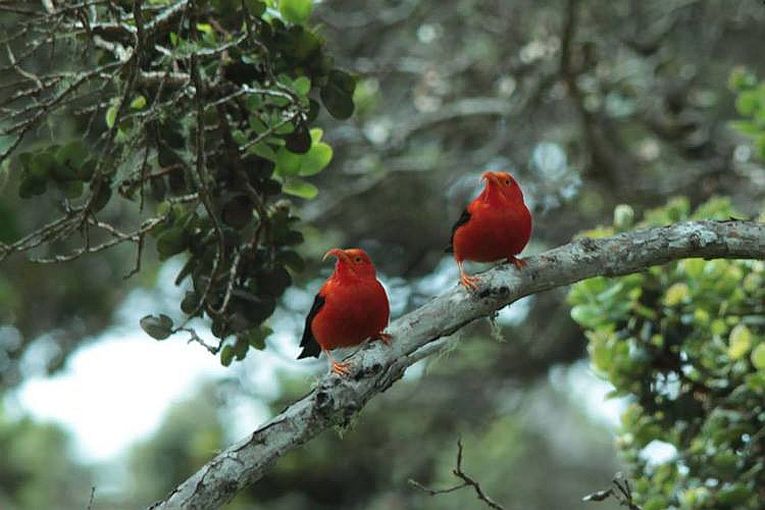The archipelagos of the world have revealed more about evolution to us than anywhere else. From the Canaries and the Galapagos, early travellers noted down how different the flora and fauna were, then a certain gentleman had his goose cooked on Hawaii and we realised that all the remote Pacific Islands were also full of unique species. The richness of diversity on the Hawaiian islands is created and restricted by their geology. This story was based on the habitat provided to blind shrimps by lava flows.
As the area of volcanic islands increases and then slowly declines, environmental change influences speciation rapidly. Like the Galapagos, the volcanic peaks that are the islands form in sequence, allowing a study of the evolutionary radiations as they unfold on each island. Basically, this is a brand new, comparative technique. 14 Hawaiian groups of animals and plants were quantified according to their species richness within each group or clade.
From honeycreepers (birds) and silverswords (asters) to fruit flies, mints and lobelias, the species of each group all showed declines in number according to the area of each island or island group. Surprisingly the 120m sea-level rise (to envelop much of the older islands) had little effect after the last glacial maximum (Ice Age.) The Big Island, Hawaii has not yet reached its maximum species number, while the oldest islands such as Oahu and Maui Nui have eroded and slumped enough to have reduced diversity in many groups.
In other ecosystems completely, the authors, Jun Y. Lim & Charles R. Marshall of the University of California, Berkeley,US, claim many other species groups could well be in long term evolutionary decline over the past 10-15 million years. Moist forests and marine tropical biomes in the eastern Pacific have few fossil records and their species phylogeny is difficult to define. The answer to the question of this evolutionary decline would be found in these studies on the decline in island species numbers. More on the Berkeley news (and a ref. to this paper) is at The true tempo of evolutionary radiation and decline revealed on the Hawaiian archipelago










